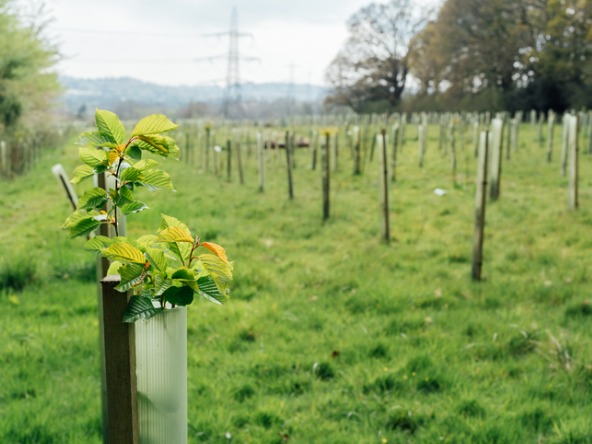Making the world greener: Changing attitudes to trees

Climate change is an increasingly urgent problem and we are seeing more and more clients wanting to tackle important sustainability issues, and needing to understand the often complex barriers to sustainable consumer behaviour. Behavioural research can be hugely insightful in unlocking insights into these barriers and inspiring actions.
At The Behavioural Architects (TBA) we work across a wide variety of sustainability challenges for many clients, so we were thrilled to win the first ever MRS Sustainability Award in 2022 for our work ‘greening Sydney’ with the New South Wales (NSW) Government Department of Work and Planning.
The NSW Department of Planning and Environment had identified the lack of tree canopy across greater Sydney as a key contributor to the rapid heating of Sydney’s suburbs. To tackle this they launched a programme, ‘Greening Our City’, to increase the tree canopy across Sydney by planting one million trees by the end of 2022.
However, how do you encourage residents to plant trees on their private property, and register those trees on the NSW government’s five million trees campaign website?
Earlier research had found that although people generally accept the environmental benefits of trees, and even appreciate them on public land or other people’s property, many did not want to plant trees in their own backyard. This research suggested there was a need to encourage a greater sense of personal responsibility among homeowners to encourage the planting of trees on their own land; education alone was unlikely to overcome these barriers. Instead, a significant shift in communication strategy was needed to drive behavioural change and get people to plant trees.
This is where the NSW Department of Planning and Environment engaged us at TBA to conduct behavioural research and devise a behavioural change strategy to encourage the planting and registering of trees on private property.
TBA’s behavioural research found Sydney residents held a range of views towards trees. While some people saw trees as essential to outdoor space, and most accepted their environmental benefits, many people saw trees as a big nuisance that they did not want in their own backyard. The research unlocked three key insights driving these views:
- One, when used in the context of asking people to plant on their private property, ‘trees’ themselves unlocked immediate negative associations with size, danger or mess. The use of the word ‘tree’ was a barrier to planting one
- The social norms people tended to follow focused on tree removal, cutting them down rather than planting them
- Finally, even if people were motivated to plant a tree, the process seemed off-putting, with sequential barriers to choosing, buying, planting and maintaining a tree.
The research also identified three principal clues to a solution in the behaviours of people who were already planting trees on their property. In particular, we discovered that people don’t plant trees, they plant solutions to a problem in their garden, from a desire for shade to privacy, to fruit or flowers, or wildlife. This means that if you want someone to plant a tree, the word ‘tree’ is the last thing you should say. Instead start with what people want to achieve and give salience to the ‘benefits’ of a tree, unlocking intuitive, positive associations.
Secondly, people are suggestible and respond to free tree giveaways, even if they would not have initiated this decision themselves. Finally, the tree planting journey needs to be cognitively easy, chunked down in a simple, timely manner to make the process easy and ensure follow through.
These insights became the foundation of the ‘Greening Our City’ communication strategy:
- Try not to mention ‘trees’ – instead, give saliency to the benefits and solutions for gardens afforded by trees
- Build a more appealing vocabulary around trees to positively prime associations and displace negative associations
- Give salience to a dynamic norm as the planting number grows – highlight that more and more people are planting trees in their gardens
- Keep the tree-planting journey easy – simple, timely and with chunked down information.
Through this scheme, people could pledge to plant a tree, leveraging commitment bias and making them more likely to act. Or they could register a tree they had already planted, activating endowment bias, the tendency to value an owned object more.
These TBA insights inspired the communication campaign and more than one million trees were planted before the end of 2022.
Acknowledgements: Crawford Hollingworth, Mike Daniels, Liz Barker and Lucy Pilling are at The Behavioural Architects, and Cassandra Cosgrove, director at Greener City NSW Department of Planning and Environment

We hope you enjoyed this article.
Research Live is published by MRS.
The Market Research Society (MRS) exists to promote and protect the research sector, showcasing how research delivers impact for businesses and government.
Members of MRS enjoy many benefits including tailoured policy guidance, discounts on training and conferences, and access to member-only content.
For example, there's an archive of winning case studies from over a decade of MRS Awards.
Find out more about the benefits of joining MRS here.













0 Comments